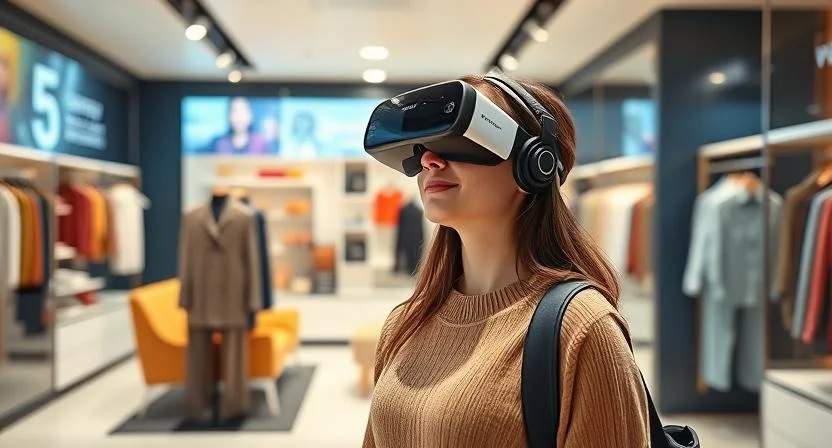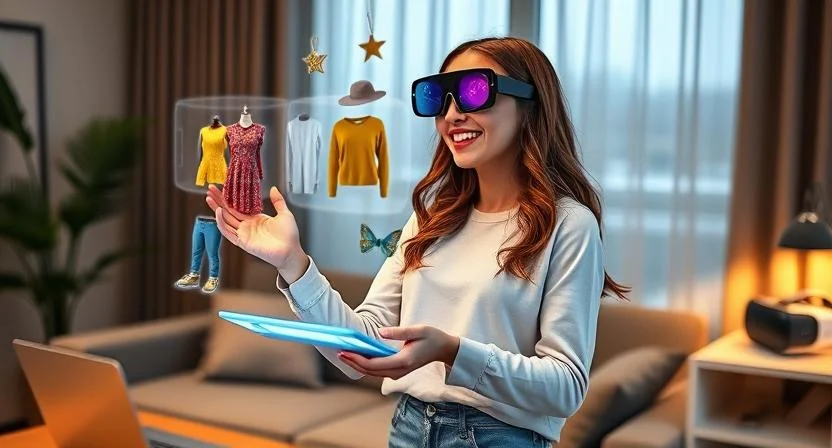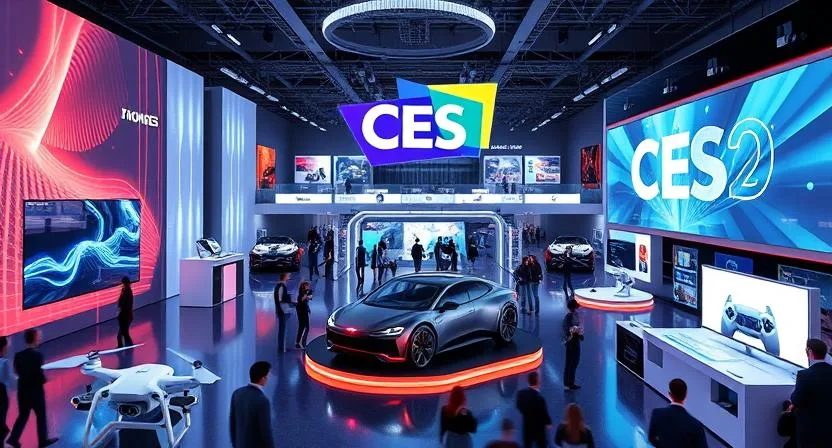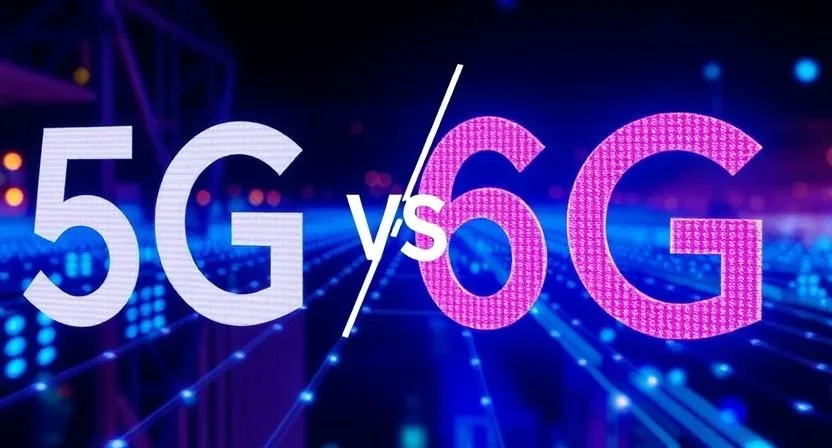AR and VR means Virtual reality (VR) and Augmented reality (AR) are no more only features of science fiction films and video games. Among the technologies transforming online consumer experiences, both ones play quite real roles in the retail experience of today. Over the next years, these jobs will grow increasingly more important and sought after. Though many e-commerce companies still have not embraced the technology, the applications are vast and offer great benefits. These are the reasons they should.
How Might Companies Incorporate AR and VR Into Online Retail?
Brands have no shortage of ways to include VR and AR into the online buying process.

Testing Products Before Buying
Virtual try-on solutions, or VTOs, are the most well-known augmented reality application in the e-commerce space. While companies can better control customer expectations, these virtual tools help consumers make wise buying selections.
“In short, a virtual try-on is the way a customer can “try on” a product through mobile or other devices equipped with a camera,” says Aleksandra Kwiecien, former content manager at Divante and current content manager at Infermedica. “Thanks to the underlying AR technology, future consumers might find themselves in a beloved product on the screen of their smartphone.”
She notes that virtual try-on technology has been available for some time. “But the rise of social media filters has helped facial recognition to flourish, so enhancing its popularity.”
Digital marketing specialist Ralf Llanasas says these programs generate cross-channel online traffic and draw customers looking for improved purchasing experiences. From the shopper’s point of view, virtual try-on solutions are innovative answers for stores handling jewelry, eyeglasses, shoes, clothing, and more.
There are other ways consumers could test goods before making a purchase besides VTs. Writes Ravi Sharma, founder and CEO of the digital business Webomaze, augmented reality also lets consumers visualize how a tangible thing would look in real-world surroundings. In the decor business especially, he says, this is rather strong. “The buyers can determine how a sofa would look after placement in the house by using this specific technology.”
Restoring the In-Store Experience
Says Jake Rheude of Red Stag Fulfillment, virtual reality can help close the distance between conventional businesses and internet buying. “In a brick-and-mortar store, a retailer can attract customers in by designing an appealing environment with fun music and dynamic product displays.” Usually, it is not feasible online unless companies employ VR to highlight their goods in virtual reality settings that explain how consumers may use them. Rheude says VR lets companies create an ideal world consumers may inhabit upon purchase of the goods.
Writes Jake Hughes of the keyword tool Wordtracker, the social component of purchasing may also be reproduced online via VR. “You can interact with 3D products, walk about the VR store with friends in real-time, ask a virtual member of staff if you need help with something.”
Creating Buzz
AR and VR do not have to be exactly related to the sales process. Tom Sharman, co-founder of talent management and consulting New Waves, believes the technology may also be leveraged to generate industry buzz and brand exposure.
He provides the fictitious scenario whereby Ford develops a virtual reality racing game. Although the game can provide a taste of what it’s like to drive a Mustang, it isn’t actively pushing consumers to purchase a new automobile.
Interactive Manuals for Users
Interactive user guides are another non-sales-related AR usage. The crew at PixelPhant’s picture editing business finds the procedure straightforward. Users of an app scanning a product like a coffee machine receive a virtual walkthrough of their item, understand how it operates, and investigate features.
This sort of application helps your post-sales support workers to be less stressed, the team notes. “Teaching your consumers about your products not only makes them aware of you and tell them ‘how-to’ but it also reduces your customer support load and improves engagement.”
How Can AR and VR Help Companies?
Virtual and augmented reality both provide e-commerce companies actual, quantifiable advantages. These advantages immediately affect other important measures, such as customer satisfaction levels and sales.
Eliminate Friction from the Customer Path
The online buying process still causes some conflict even if e-commerce use is accelerating. Rebekah Carter of the extended reality news source XR Today thinks AR and VR help to somewhat lower that barrier. She says, “Your customers can try on the products they like with AR instead of having to gamble and maybe send a pair of sunglasses back if they don’t look good.”
VTO technology allows consumers to search for answers to their questions without involving customer care. For instance, visually positioning a sofa in their space helps them to understand its measurements.
Less Returns
Additionally able to aid lower returns are AR and VR technologies. “Try-before-you-buy AR initiatives offer an interesting chance to help lower fashion industry return rates,” notes Hannah Leary of Swanky Agency. ” Giving consumers the ability to see a product and even try it on (albeit virtually) should make them feel more confident in their purchasing decision and so remove the need to buy several versions of one product.”
Boost Online Marketing Initiatives
AR and VR might potentially help future efforts at internet marketing to be more successful. Vince Cacace, Founder and CEO of 3D and AR commerce solutions business Vertebrae, notes Facebook is already running AR e-commerce advertisements.
AR product photos are another item Google is considering including into both sponsored and natural search results. Ulyana Paliychuk of Evergreen, a provider of business automation solutions, says users of the View in 3D button may either interact with your three-dimensional virtual product or “place” it in their real-world surroundings using augmented reality. “At this point they might either go back to the results page or your website.”
Which online stores now make use of AR and VR?
Some brands fit AR and VR more than others. According to Aurora Harley, Senior User Experience Specialist at Nielsen Norman Group, the advantages of the technology are particularly suited to items whose purchase choices depend mostly on appearance or size. “People want to make sure these things would fit in their space and match their general style, thus home décor and furniture are top candidates to get the AR treatment.”
Sephora
Using augmented reality in e-commerce is best shown by Sephora’s Virtual Artist. Alison DeNisco Rayome, a Senior Editor at CNET, said the app lets consumers test hundreds of colors of lipstick, eyeshadow, false lashes, and many other beauty products available at Sephora. “It also enables users virtually follow beauty instructions on their own face to learn how to get particular looks. Using an uploaded picture, a new tool called Color Match uses artificial intelligence to assist consumers in selecting the correct color hue for their skin tone.
KKEA
Customers may view virtually any item of furniture they offer on the IKEA app to see how it might appear in their homes. Using the camera of the smartphone, the software creates a 3D picture of the furniture in the room by use of AR technologies. Shoppers may also rearrange the furnishings whenever they choose.
MOSCot
By working with AR and VR pioneer Vertebrae, fashion company MOSCOT can provide VTO to eyewear buyers without an app.
“Vertebrae shares our commitment to quality and excellence; it was an easy decision to partner with their team to manage and apply 3D and AR in keeping with the service we have offered our clients for over a century,” says Zack Moscot, Chief Design Officer of MOSCOT. “We are eager to extend our implementation to bring our timeless style and exceptional quality to life for digital consumers; our initial results are strong.”
AR and VR have their time. right now
VR and AR are no more fringe technologies. Furthermore, fueling the expansion of these technologies in e-commerce are not only the ones mentioned above.
The epidemic is hastening AR and VR use as well. Since the epidemic began, Ulta’s VTO tool GLAMlab saw engagement rise sevenfold, notes Helen Papagiannis, Ph.D., consultant and digital magazine XR Goes Pop’s creator. Using the app, consumers have swatched more than 50 million foundation colors.
Another reason is social media, Maria Monteros, Associate Editor at Retail Dive, notes. Particularly, Snapchat is investing heavily in AR and VR by working with tech businesses and brands to let consumers virtually test items in-app. Recently it has bought Fit Analytics, a size tech business, and Screenshop, a fashion advice tool.
There is lots of space for expansion. Grand View Research estimates the worldwide virtual reality market size in 2020 to be $15.81 billion and a compound annual growth rate of 18% until 2028. Industry growth will enable e-commerce companies to keep including AR and VR into the online buying experience, developing in ways meant to delight consumers.
See an ESW specialist if your brand is ready to welcome and use the audacious future of DTC e-commerce. ESW provides solutions for market entry and long-term success, ranging from swift globalisation to building your store from the foundation up.
Hot Topics Relatedto this:







